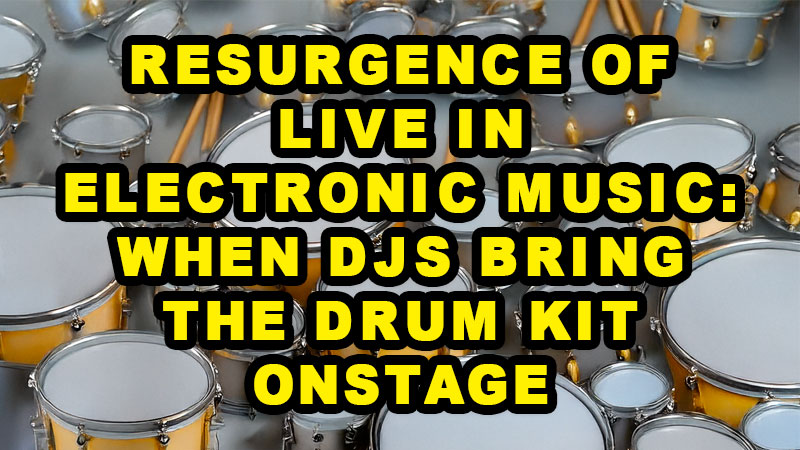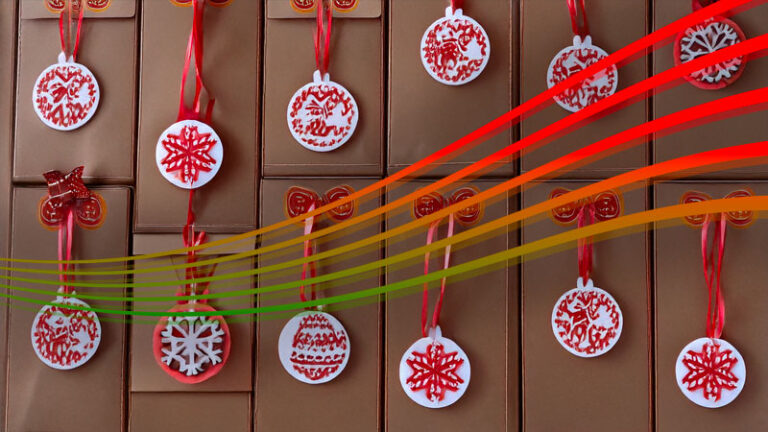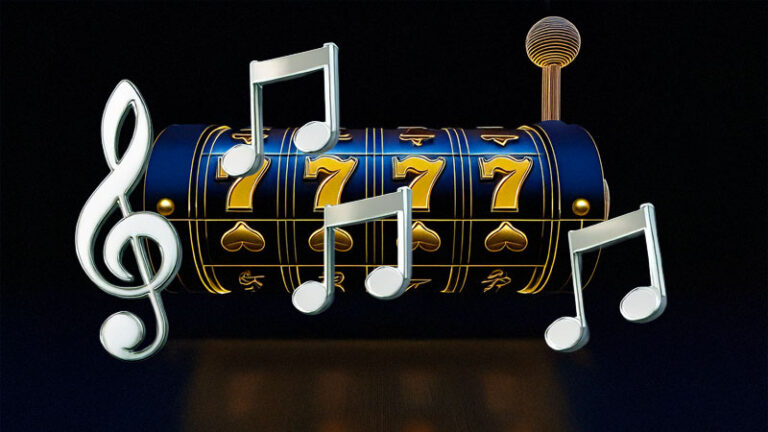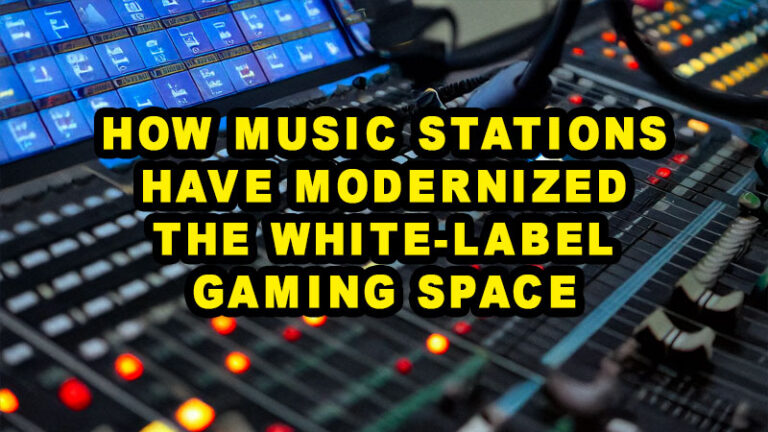The lights dip low.
A sea of hands rises.
The bass thunders, and then something unexpected cuts through the haze: the sharp, human crack of a snare drum.
The DJ, once hidden behind a laptop and a pair of decks, now grips drumsticks and locks eyes with the crowd. What follows isn’t just a drop; it’s a performance.
Across clubs, festivals, and warehouse shows, this scene is becoming increasingly familiar. DJs and producers are stepping out from behind their laptops and bringing live drums into electronic music sets. It’s more than a gimmick; it’s a response to shifting audience expectations and a hunger for authenticity in a genre built on machines. The resurgence of live performance is redefining what it means to experience electronic music one cymbal crash at a time.
From Sync Buttons to Sticks: Why DJs are changing the game
Electronic music’s meteoric rise over the last two decades has been fueled by technology such as laptops, controllers, and software that allowed artists to perform alone, anywhere. The accessibility was revolutionary. But it also created sameness. Press play. Twist knobs. Trigger loops.
Audiences, once mesmerized by the novelty of DJing, now crave more. They want connection, imperfection, performance.
This is why artists like Fred again.., Bicep, and Charlotte de Witte are evolving their sets to include live percussion. It’s about expanding the possibilities. Hybrid shows where pads, acoustic kits, and sequencers coexist are pushing electronic music toward a more visceral future.
The Hybrid Revolution: Building a live-electronic setup
Bringing drums into a DJ set isn’t as simple as dropping a kit next to the booth. It’s an art, and a technical challenge. Artists are building hybrid rigs that combine acoustic drums, electronic pads, triggers, and sample modules. These setups allow performers to layer human groove over programmed beats without drifting off-tempo.
- Acoustic Meets Digital: Traditional drum kits provide raw, visual energy, while electronic pads (like those from Alesis) trigger samples that sync seamlessly with software like Ableton Live.
- Portability Matters: Compact kits and modular hardware mean artists can scale their rigs from club stages to festival main stages without sacrificing sound quality.
- Cymbal Dynamics: Swapping static hi-hat samples for real cymbals adds nuance and excitement to your playing. Many newcomers explore this tactile side of rhythm by starting with cymbal box sets for beginners, and trusted retailers like Drum Center of Portsmouth (DCP) offer curated packs tailored to entry-level drummers looking to upgrade their sound without overcomplicating their setup.
Drum Center of Portsmouth retailers have noticed a surge in hybrid percussion gear sales, particularly from electronic artists eager to blur the line between DJ and drummer. There’s a new generation of producers who don’t want to just play tracks, but they want to play music.
Artists Leading the Live Drums Renaissance
Some of electronic music’s most exciting acts are proving that live percussion is a creative evolution.
- Fred Again – Known for deeply emotional live sets, Fred often uses percussionists to accentuate loops, adding heartbeat-like rhythms that make his shows feel raw and human.
- Bicep – The Belfast duo’s live shows feature hybrid drum setups that bridge techno and breakbeat, creating a kinetic energy that recorded versions of their tracks can’t match.
- Disclosure – The British electronic duo has long blurred the line between DJ set and band performance. Using keyboards, acoustic drums, Akai MP32s, and a range of other devices, Disclosure manipulates sound live on stage, blending pre-made loops with real-time renditions for a seamless, high-energy experience you have to see to believe.
- Rufus Du Sol – Their festival-dominating sets blend live drums with sweeping synthscapes, redefining what a “DJ set” can look and sound like.
- Overmono – The brothers’ hardware-heavy performances often include live percussion elements that morph their UK garage roots into futuristic forms.
These artists share a common ethos: technology should serve performance, not replace it. By reintroducing physical rhythm into digital music, they’re building a future where the laptop and the drum kit stand side by side.
Inside the Performance: What changes when drums join the booth
Once sticks enter the mix, everything shifts, musically and emotionally.
1. Groove Becomes Alive:
Sequenced beats are precise but static. A human drummer brings micro-variations that breathe life into a track. Even slight timing imperfections create a groove that loops can’t be replicated.
2. Crowd Connection Deepens:
Audiences watch drummers in a way they rarely do with DJs. The physicality of sticks flying, sweat dripping, bridges the gap between performer and listener. It turns a passive listening experience into an active, shared moment.
3. Improvisation Enters the Room:
Unlike pre-programmed drops, live drums allow for spontaneity. Artists can respond to crowd energy in real time, speeding up fills, extending breakdowns, or shifting dynamics on the fly.
4. Collaboration Flourishes:
Hybrid performances often bring drummers and DJs together onstage. Projects like Rufus Du Sol fuse live percussion with synth landscapes, while techno pioneer Reinier Zonneveld incorporates drummers into extended live jams that evolve organically.
As Woolford puts it, “The kit isn’t there just to decorate the beat. It changes the music itself. It pushes you to react, not just press play.”
The Ripple Effect: Changing audience expectations
The embrace of live drums in electronic music is more than a stage trick. It’s shifting the culture itself.
Fans who once expected DJs to stand behind a booth now anticipate performers who sweat, improvise, and interact. Festivals are curating stages specifically for hybrid acts.
Promoters are investing in upgraded PA systems to capture the nuance of live percussion. Even beginner producers are exploring performance-ready gear earlier in their careers.
This shift has also created new opportunities for drummers. As electronic artists seek collaborators who understand groove and tech equally, percussionists are finding themselves center-stage in genres once dominated by software.
The rise of hybrid percussion gear from compact electronic kits to all-in-one cymbal sets for beginners has made it easier than ever for musicians to bridge the gap between acoustic feel and electronic precision.
What Comes Next: A Future Built on Feel
The resurgence of live drums in electronic music signals something deeper than a trend. It’s a reminder that even in a digital world, human rhythm remains irresistible. As audiences crave authenticity and connection, the artists who thrive will be those willing to break free from the booth and embrace the sweat and spontaneity of live performance.
The next time you walk into a club and see a DJ pick up a pair of sticks, know this: you’re not just watching someone play drums. You’re witnessing the future of electronic music – one snare hit at a time.





